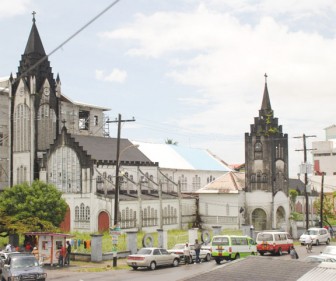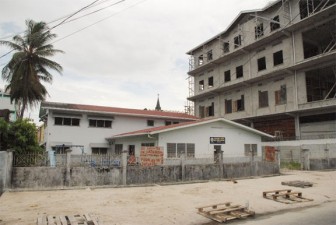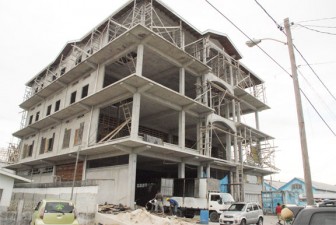Amid the storm of outrage and regret at the sale of the St Barnabas Church to Essequibo businessman Alfro Alphonso, evidence has emerged that a decision to dispose of the building had previously been taken in July 1969.
According to a letter written to the Anglican diocese by Archbishop Alan John Knight, the building had been found to be structurally unsound and the estimated cost of reconstructing it was in the vicinity of $204,000. The archbishop in the letter, published in the September 1969 issue of the Anglican Church in Guyana’s Diocesan Magazine, which this newspaper has seen, lamented that “there could be no reasonable expectation of raising the sum of $200,000” for the preservation of the building. A recommendation was therefore made, after full consultation and consideration, that the church site be offered for sale; that the purchaser be required to demolish the building—after the altar, font and ornaments had been removed—and that a new church be built with the proceeds of the sale at a nearby site. The letter said that the recommendation was accepted and fully endorsed by the Diocesan Council at its regular meeting in July 1969. It took 42 years for the recommended action to actually be carried out. Today, most, if not all of the people involved in making the decision, are no longer around.

Giving a brief history of the church in his letter, Archbishop Knight noted that it was a monumental landmark in the city and that its building and tower formed an integral part of Georgetown’s character. He said the church had architectural merit, pointing to its beautiful interior and noted that it stood as a memorial to Canon Roberts Rea who built it and subsequently served that parish “during one of the longest incumbencies in our history.”
However, the archbishop stated that since Canon Rea’s death, the diocese had been spending “thousands of dollars to preserve the fabric.” The letter, dated August 10, 1969 stated that after the last major restoration, the contractor had assured the diocese that the building was safe for another 25 years. However, this proved to be wrong as the eastern and western portions of the building “settled in opposite directions, the middle section [had] collapsed” and the tower shifted, leaning to a degree that made it unsafe. The archbishop called it “a threat to public safety.”

According to reports, St Barnabas was built in parts, with the first structure said to have been completed in 1884. A snippet on the National Trust of Guyana’s website, under the heading ‘Historic Bourda,’ states that many changes were made to the original structure “as time evolved, including the addition of a steeple and a Chapel of Corpus Christi in 1926.” It may be therefore, that these additions contributed to the unsoundness of the building.
Nevertheless, the letter continued, the diocese undertook to have two different engineers survey the structure and both concluded that unless the church could be almost entirely rebuilt it was doomed. The reports of the engineers and estimates of the rebuilding cost were studied by stakeholders and it was at a meeting of the church’s vestry, the Diocesan Council and the Trustees of Canon Rea’s estate that the decision was taken to dispose of it.

Addressing the question of whether a church building once consecrated may lawfully be demolished, sold or put to other uses, Archbishop Knight said in his letter that when a church is built and consecrated, neither the site, nor the surrounding land is consecrated, unless it is to be used as a burial ground. There is no burial ground at the St Barnabas church site. The letter said if the church building is demolished and moved away, Canon Law allows for the disposal of the site “at the sole discretion” of the Bishop of the Diocese.
Noting that there might be qualms of conscience about disposing of a church building, the archbishop recalled that since the 12th century, the church has taught that if a church building is destroyed or demolished it “loses its sacred character.” Canon Law prescribes for the subsequent disposal of materials, provided that the font, altar and communion plate are removed and transferred to another church.
He said too that the church is not a building, but the people of God. The church building merely houses the church “the family of God which makes up the local parish.”
In concluding his letter, Archbishop Knight raised the possibility of a reprieve if any individual or group could come up with the $204,000 or show how the funds could be raised. He then promised that whatever happened there would still be a parish church for St Barnabas—that the money raised from the sale of the old site would be used to build a modern church within the Bourda zone. This was never to be.
For reasons which are unclear, St Barnabas was granted a 42-year reprieve, but not the kind the archbishop foresaw. The original church building remained, but its membership waned as commercial activities heightened in the area. In recent years, the churchyard was constantly invaded by vagrants and an overflow of garbage from the nearby market and other entities. The vicarage was sold some time ago, demolished and a huge multi-storey concrete structure is currently being built in its stead. Now that the church building will soon be no more, the only vestige of the Anglican Church in Bourda will be the Mother’s Union Day Care Centre.




